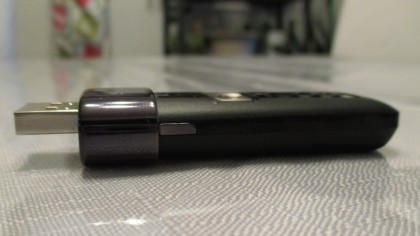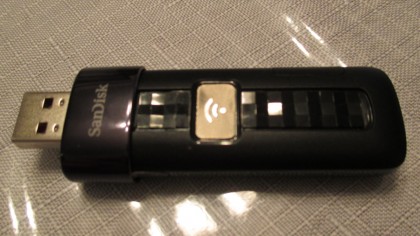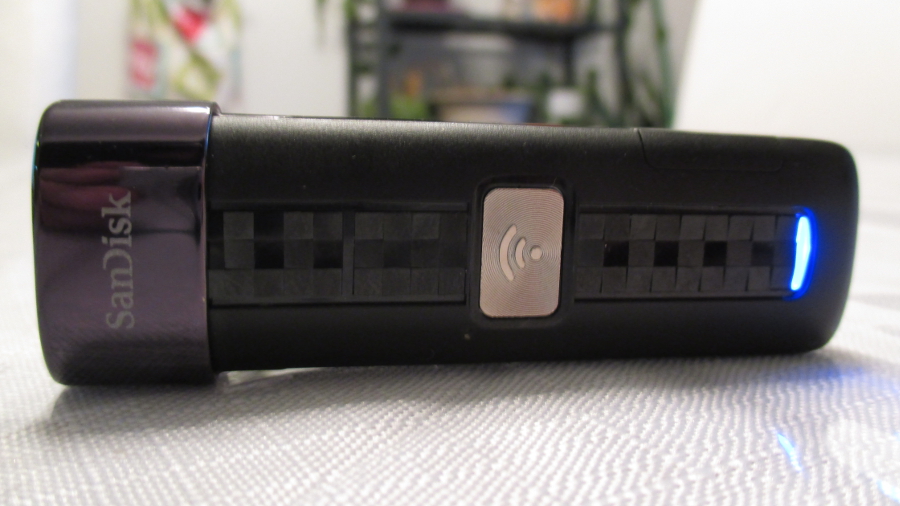Why you can trust TechRadar
Before you start using the Connect Wireless Flash Drive for its Wi-Fi capabilities, you will need to charge it. You can charge up via a USB port on your computer, or a charger. The instructions that come with the device note that it requires two hours of charging before use for the Wi-Fi option to work. Regardless of waiting for Wi-Fi to work, the SanDisk stick will function as a normal USB drive off the bat – there's no need to wait there, naturally.
The performance of the Connect Wireless Flash Drive is typical of a USB stick. The Read/Write performance is pretty phenomenal and you can easily copy stuff to the drive via USB very swiftly.

Using the ATTO Disk Benchmark, the test results I recorded are as follows:
USB 3.0
64kb Block Size
- Read speed was in the 3.25Gbps range
- Write speed was around 2.75Gbps
128kb Block Size
- Read speed was in the 3.6Gbps range
- Write speed was around 3.1Gbps
256kb Block Size
- Read speed was around 4Gbps
- Write speed was around 3.5Gbps
USB 2.0
64kb – 256kb Block Size results were all the same
- Read speed was around 17Mbps
- Write speed was just over 10Mbps
So, it seems that the SanDisk Connect Wireless Flash Drive is a USB 3.0 flash device. But regardless, the speed is pretty decent. If you are only using this device for project decks, PDFs, spreadsheets and other business-based files then you will not have a problem transferring files to this USB drive in any form.
Transferring bigger files, say a ton of MP3s or a movie, may take a while if you are using USB 2.0, but will be quick on USB 3.0.
The Wi-Fi aspect of this device is a bit different. For starters, the Wi-Fi on the Wireless Flash Drive is started by pressing the Wi-Fi button until it blinks blue. Once on, you connect your mobile device or computer to the Connect Wireless Flash Drive by selecting the pre-named wireless name. On a Mac OS X or Windows machine, you can connect to the drive via a web browser.

The directions to hook up with a web browser instruct you to connect to http://www.sandisk.com/WFD but I haven't made that work consistently. What I have been using is the IP address (which can be found in your network adapter's IP settings, then point your browser to the information under the 'gateway' setting) of the SanDisk drive in the web browser. Usage via the web browser is merely okay – it just lists files in a basic directory, but it works.
For mobile devices you can download the SanDisk Wireless Flash Drive app. Once downloaded, you connect your Android or iOS device to the SanDisk Connect Wireless Flash Drive's Wi-Fi and that's it.
The mobile app is far better than the web browser app. You can change the Wi-Fi (SSID) name, password, and energy saver settings on both the web and mobile apps. The web platform allows you to change the Wi-Fi Channel of the Connect Wireless Flash Drive, and the mobile app lets you add the SanDisk device to an already existing Wi-Fi access point. So, if you want your SanDisk stick to connect directly to your home network, then you would set this here. The mobile app also allows you to upload contacts and other files, along with the facility to download files to your device.
One more thing to mention is that the Wi-Fi battery life is pretty decent. I put a movie on the Connect Wireless Flash Drive and I streamed it to my mobile phone, and the SanDisk device lasted for 55 minutes before giving out.
